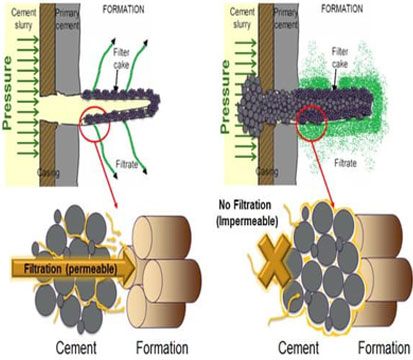"Squeezing" cementing
Extrusion cementing is a “correction” process that is usually only needed to correct a problem in the well pit. Before using a squeezer application, a number of decisions need to be made to determine:
- If there is a problem
- Magnitude of the problem
- If squeezing cementing will fix it
- Risk factors present
- If the economy will support it.
Extrusion cementing techniques
The following techniques are the six common applications of this method.
"Squeeze" in running
This method is any operation in which continuous pumping is used to force the cement into the extrusion interval. This technique is sometimes called “walking squeeze” – mainly when low pump speeds and minimal grading pressure are used. Although running squeeze is easier to design and implement, it is probably more difficult to control because the rate of pressure increase and the final squeeze pressure are difficult to determine.
As the run-squeeze pressure increases, the pump speed must be reduced, creating a tightening. Such methods can be applied whenever the well can circulate at a reasonable pump speed (approximately 2 bbl / min). When applied correctly, most squeezers are low pressure applications, however they often turn into high pressure applications due to:
- Unknown formation characteristics
- The quality of the sludge used
- Lack of work control

Squeezing hesitation
This technique is often used when squeezing pressure cannot be obtained using a running technique due to:
- Gap size
- Lack of filter control
- When squeezing should be performed under a critical well pressure
During the application of this method, the pumping sequence starts and stops repeatedly while the pressure is closely monitored on the surface. The cement is deposited at extrusion intervals and the slurry is designed to increase the resistance (development of gel strength and velocity of liquid flow) until the final extrusion pressure is reached. Operators must thoroughly design and test the cement powder to understand how its properties will change with frequent closures and to safely approximate the closure period between pumping cycles. For many conventional extrusion applications, “hesitation squeezing” may be a safer, less costly, and more effective technique.
High pressure extrusion cementing
A high-pressure squeeze is an application performed on the fracture pressures of the formation – when fracture is necessary to displace the cement and close the formations or to place injection points between the channels. Sludge volumes and flow vary with the size of the interval.
“Block” extrusion is the process of extruding permeable sections above and below a production area, which requires insulating the area with a packer and holder, using high pressure to introduce cement sludge (fracture) into the area.
Cement sludge will not invade a formation unless it is broken, creating a large crack to accommodate all of the sludge. Otherwise, dehydration occurs and only the filtrate enters the area. High pressure is usually required to orient all well fluids to the formations in front of the cement sludge. This technique is often called a “head kick”.

Low pressure extrusion cementing
A low pressure squeeze is when any squeezing application is performed under fracture pressure. This method can be applied whenever clean well liquids can be injected into a formation, such as permeable sand, lost circulation interval, broken limestone, ditches or voids. The filtrate from the cement powder is easily displaced at low pressures and the dehydrated cement is deposited in the void. Complete cement mortars will not invade most formations unless a fracture opens easily or forms during the crushing process.
Extrusion of packaging / holder
Extrusion tools are often used to isolate the extrusion interval and to place the cement as close as possible to the extrusion target before applying pressure. Bridge holders or plugs are used to create a false end and are placed just below the squeeze target inside the box or tube. This procedure closes the open well below the target (which can be several thousand feet) and reduces the volume of cement needed for crushing. A package can be inserted into the well hole and placed over the squeezing interval, between two intervals or under an interval. The packers allow the well to circulate until the cement sludge is pumped. The packer is then placed, which closes the ring so that the cement can be squeezed through the pipe under the package or down the back between the pipe ring / winding above the package. The following can be more accurately defined and controlled using extruders:
- Cement volumes
- Squeeze pressures
- Objectives
Bradenhead Squeeze
This technique is often applied when the problem appears during drilling (lost circulation) or immediately after a primary cement work. A Bradenhead squeeze is performed when the squeezing tools are not available or can not be inserted into the pit, or when the operator thinks he can successfully control the problem without pulling the drill cord, pipes, etc. from the well.
Whether during drilling or finishing, a Bradenhead is performed by circulating cement mortar up to the crushing interval, then pulling the work cord over the top of the cement column. The back of the well is closed inside and pressure is applied through the working cord to orient the cement in the extrusion interval.
A hesitation squeeze is sometimes used to more effectively pack cement in all voids. Most rolled pipe extrusion applications are performed using this technique.

